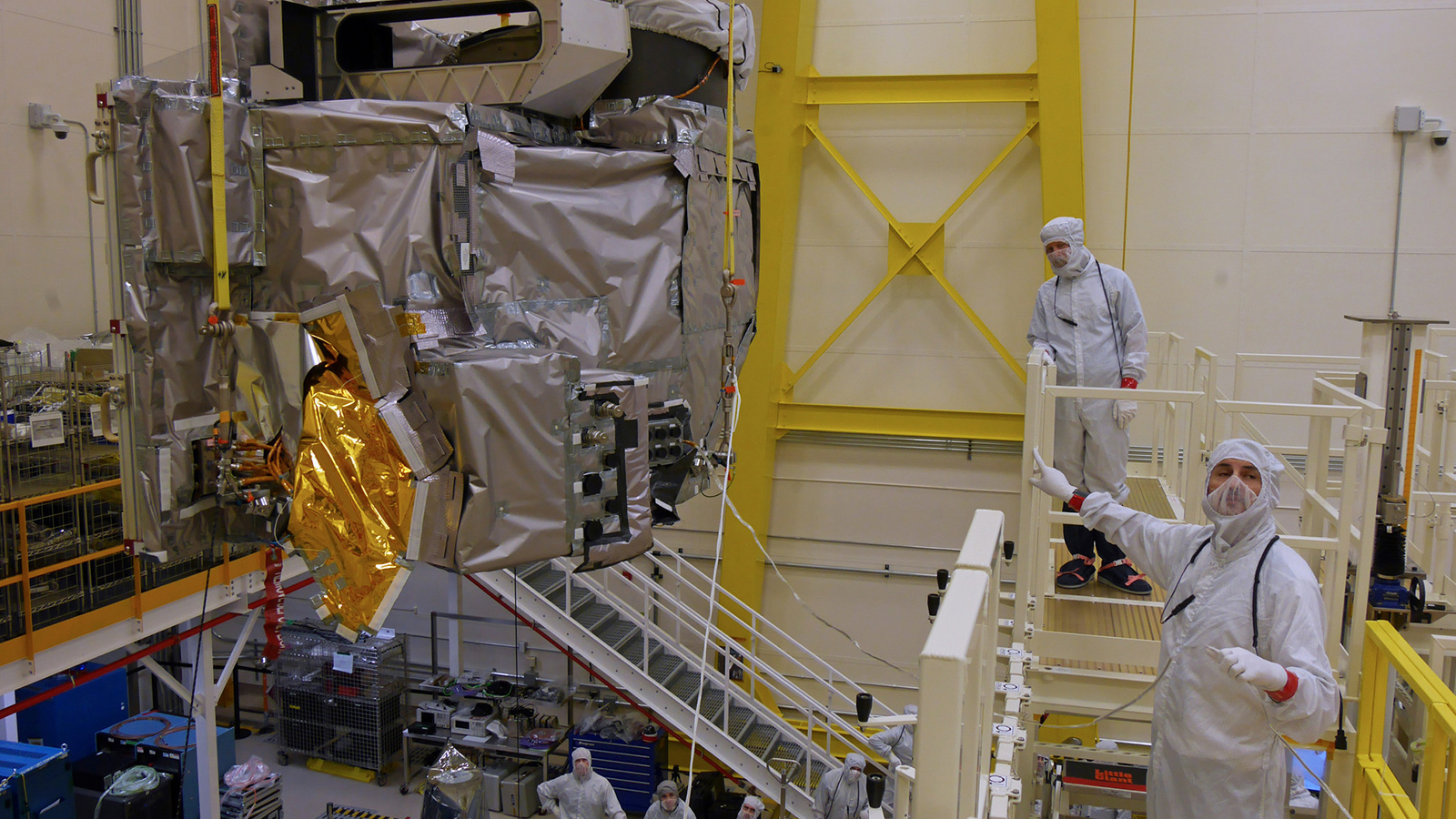Stay Up to Date
Submit your email address to receive the latest industry and Aerospace America news.
NOAA, NASA and industry experts are digging into the intricacies of loop heat pipes as they try to figure out why the main camera on the newest U.S. geosynchronous weather satellite isn’t working during the middle of the night over the U.S.
The team’s task is to identify the cause and whether anything can be done remotely to correct the problem on the school bus-sized GOES-17 satellite, which is in geosynchronous orbit 35,000 kilometers over the equator.
At stake is whether the satellite can take over the imaging duties from an older NOAA satellite that currently watches the western half of the Americas and much of the Pacific Ocean from the GOES West position. Without a solution, the satellite won’t be able to determine the altitude of water vapor and winds for a 12-hour period each day, and NOAA will need to continue to rely on GOES-15, launched in 2010, and GOES-16 launched in 2016.
Also at stake is the fate of GOES -T and -U, satellites that will be renamed GOES-18 and -19 once they reach geostationary orbit; they are slated to carry the same type of cameras built by Harris Corp. in Fort Wayne, Indiana.
Officials are mystified by the problem, because the camera, called the Advanced Baseline Imager, is nearly identical to those that are working properly on GOES-16 and the Japanese Himawari weather satellites.
“It was a shock when we ran into this problem,” NOAA’s Pamela Sullivan told reporters in a May briefing. Sullivan, an astronautical engineer, is directing the roll out of NOAA’s new Geostationary Operational Environmental Satellites, GOES-16, -17, -18 and -19.
The rollout seemed to be going well with the launch of GOES-16 (known as GOES-R during its NASA-managed construction) in 2016 and its subsequent commissioning. The problem with GOES-17, formerly GOES-S, was discovered during the commissioning phase following its March launch.
ABI’s thermal control system is not cooling the imager’s 13 infrared and near infrared detectors to the required temperature of minus 213 degrees Celsius, just 60 degrees above absolute zero. During the night when the camera is pointing at the U.S., the sun is directly behind Earth and some sunlight shines directly into the lens, heating it up. Cooling is necessary so that infrared energy from the atmosphere stands out when it reaches the detectors that must convert the faint infrared energy into electrical signals and measurements.
Far from giving up on ABI, though, experts are devising tests to try to figure out what’s causing the problem and strategies for solving it aboard GOES-17. The team is comparing data gathered in tests prior to launch with the performance of the instrument in orbit, and to the performance of ABIs flying on GOES-16 and the Japanese Meteorological Agency’s Himawari-8 and -9 satellites. The team also is devising tests to conduct on GOES-17 in orbit and on two additional ABIs Harris built for NOAA’s next two geostationary satellites, GOES-T and GOES-U.
The loop heat pipes contain liquid propylene that is supposed to cool the cryocooler that contains the detectors. Heat should be absorbed by the liquid propylene, turning it to vapor that flows through a radiator that sheds the heat to the cold of space. The vapor cools back into liquid to continue the cycle. The loop heat device is passive, meaning it requires no mechanical pumps or moving parts.
The cryocooler is overheating because the loop heat pipes are not transferring heat to the radiator, said Sullivan. “The thermal load increases [each day] to a point where we are not able to cool the detectors down,” Sullivan said during the press briefing. The team must “understand the loop heat pipe behavior and isolate the cause of the problem,” Sullivan said in a written response to my questions.
ABI manufacturer Harris confirmed the problem but declined an interview request. “We are working closely with NOAA, NASA and other industry experts to troubleshoot,” Harris spokeswoman Kristin Jones said by email.
In the NOAA photo, engineers install the main camera on the GOES-S (now GOES-17) satellite, whose main camera, the Advanced Baseline Imager, isn’t working in the middle of the night over the United States.
About Debra Werner
A longtime contributor to Aerospace America, Debra is also a correspondent for Space News on the West Coast of the United States.
Related Posts
Stay Up to Date
Submit your email address to receive the latest industry and Aerospace America news.




